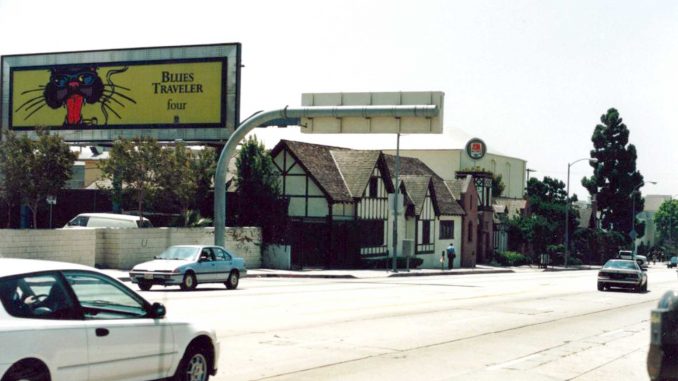
Regular contributor to these features, Tim Martin, takes a look at an iconic recording studio, closely linked to the sounds of Laurel Canyon.
Some studios become linked to particular artists or musical genres. Abbey Road will always be about The Beatles or Pink Floyd. Muscle Shoals or Sun Studios have particular sounds associated with them. A&M studios Los Angeles based at 1416 North La Brea Avenue in Hollywood, was built by Charlie Chaplin in the 1920s, and bought by Herb Alpert and Jerry Moss in 1966 to serve as a headquarters for A&M Records. They set about converting two of the old sound stages and Chaplin’s swimming pool into a recording studio. It eventually included four recording studios, A, B, C & D, three mixing suites and three cutting rooms where mastering engineers, the best known of which was probably Bernie Grundman, would prepare the finished tapes for vinyl reproduction. While much of the music recorded there were released on A&M, it was also home to many of the great albums of the 1970s that we think of as the cornerstones of Americana.

A&M staff engineer Steve Katz worked on several of Joni Mitchell’s albums in the 70s. While she worked mostly with her regular engineer Henry Lewy, on the series of albums recorded there from ‘Clouds’ through to ‘Dog Eat Dog’ Katz was with her for ‘Hejira’, ‘Don Juan’s Reckless Daughter’ and ‘Mingus’. In an interview with Mitchell’s website Katz said that her “early albums were recorded mostly in studio C, the smallest and most intimate one, measuring a mere 14′ x 21… Joni moved between studio B and C pretty often, and her favorite brown Steinway, of the four 9ft Steinways A&M had, could be moved into whichever room she was working in”. Session drummer Russ Kunkel said of working with Mitchell. “Joni cut ‘Blue’ in C. Very, very small. God, it’s such a tiny room.”
Other artists who returned to A&M studios to record several albums included Joan Baez who recorded ‘Gracias a la Vida’ and ‘Diamonds and Rust’, and The Flying Burrito Brothers whose first two albums came to life there. There was also work done on a Gram Parsons solo album. However A&M records cancelled the project as his drug and alcohol consumption made progress impossible. Allegedly Parsons signed out the master tapes from the studio in October 1970 and they are still missing.
What makes artists like these, Carole King, Crosby Stills & Nash and Carly Simon return to a studio, when they could have their pick of anywhere. Apart from record company pressure for those with the A&M label it seems to have been the intimate surroundings of studio C. Their philosophy was to “try and make A&M feel like a ‘home studio;’ one in which clients can feel relaxed and part of our ‘A&M Family,’ and not have to worry about the environment- just get down to making music!” Simon recorded many vocals there, despite producer Richard Perry recording instrumental parts at Burbank Studios, and Sunset Sound Recorders on albums like ‘Playing Possum’. With major rebuilding done in the 80s and 1996, they used the highest quality recording equipment styling the facility: “A state-of-the-art facility with a colorful past, and an emphasis on vintage technology”.
In 1999 The Jim Henson Company moved into its new home at the former A&M studios, and it has been their sound recording location ever since. What makes a studio worth remembering? That for a period of 10 years or so it was the catalyst for the creation of some great music. The room where ‘Blue’, ‘Running on Empty’, and ‘Gilded Palace of Sin’ were created deserves to be remembered, despite the recording there in 1985 of ‘We are the World’.



